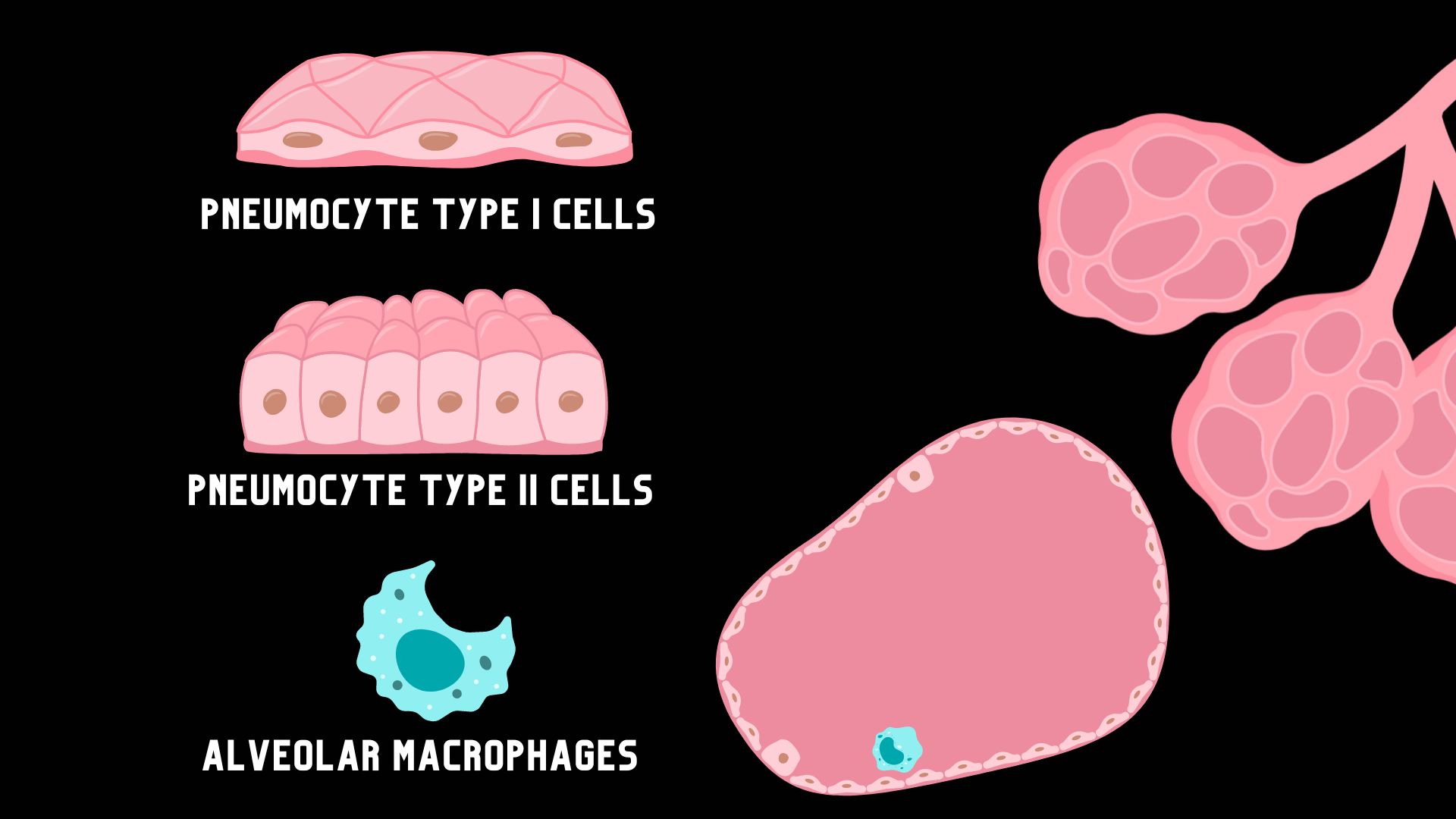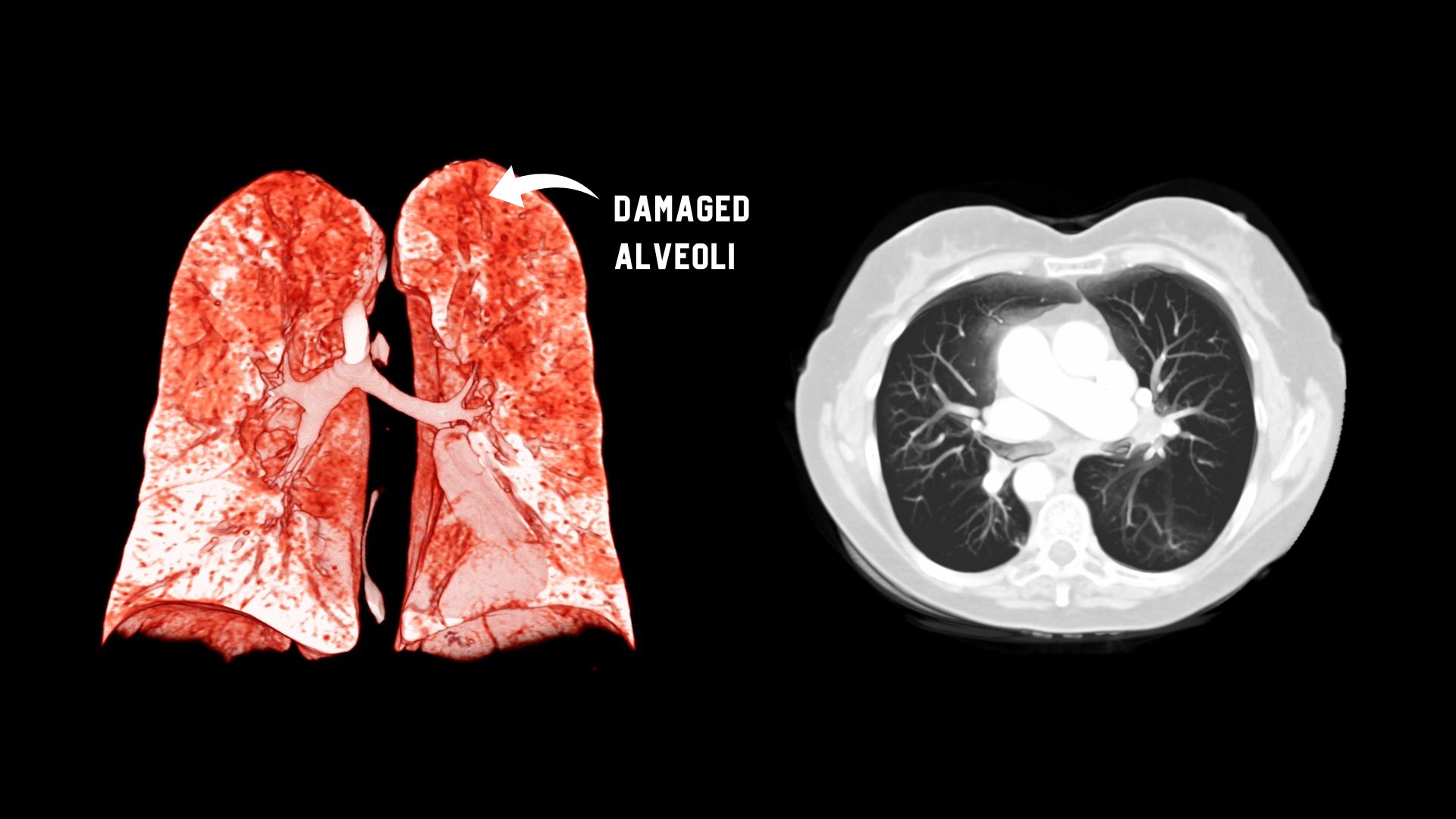Pulmonary Alveoli and Gas Exchange
by Robert Tallitsch, PhD | June 24, 2024
.jpg)
Video explaining the pulmonary alveoli and gas exchange with a patient example!
Use the button below to schedule a demo to learn about our activities, flash cards, and other anatomy resources that support this Brain Builder!
Schedule a Demo
Written by: Robert Tallitsch, PhD
The primary function of the lungs is gas exchange — the movement of oxygen from the alveoli within the lungs into the cardiovascular system, and the movement of carbon dioxide from the cardiovascular system into the alveoli. Without this exchange of oxygen and carbon dioxide between the alveoli and the respiratory system death would occur within three to five minutes.
To understand how the body reacts when this pulmonary gas exchange is hindered or made less efficient, talk to an individual after a severe asthmatic attack, or someone who has been diagnosed with emphysema or asthma. Ask them how it feels not to be able to breathe “normally” and you will get an understanding of how important gas exchange is in the human body.
In this Brain Builder, we will talk briefly about the anatomy of the respiratory pathways within the lung, followed by a more detailed discussion of the anatomy of the primary site of gas exchange in the human lung — the alveoli. We will then discuss how gas exchange occurs within the lung, and some of the problems that result when gas exchange is reduced because of emphysema.
Conducting and Exchange Portions of the Respiratory System
The respiratory system is divided into conducting and exchange pathways. These pathways demonstrate structural characteristics that facilitate
- the conditioning of the air, which includes warming, cleaning, and moistening the air, and
- gas exchange with the cardiovascular system within the exchange pathway.
The conducting pathways of the respiratory system are those structures that are not anatomically designed for gas exchange. These structures include the
- Nasal cavities
- Pharynx
- Larynx
- Trachea
- Bronchi
- Terminal bronchioles
The ability of these pathways to conduct and condition the air is dependent upon their distinct anatomical and histological characteristics.
The exchange portion of the respiratory system is anatomically designed for gas exchange. The exchange portion starts at the level of the respiratory bronchioles of the lungs, which is the first level where alveoli make their appearance within the respiratory system. Alveoli are anatomical structures within the lung that are specialized for gas exchange. The shape of the squamous epithelium allows for the creation of a large surface area and a very thin diffusion barrier, both of which facilitate gas exchange. In addition, the alveoli have a very high degree of vascularity. Three types of cells are found within the alveoli:

Pneumocyte Type I cells (also termed squamous alveolar cells or septal cells)
- These cells are squamous in shape and form the simple squamous epithelial wall of the alveolus.
- This epithelial wall of the alveolus produces a very thin diffusion barrier between the alveolus and the capillaries of the pulmonary vascular system. This allows for the fast diffusion of gasses into and out of the alveoli.
- These cells make up approximately 95% of the alveolar surface.
Pneumocyte Type II cells (also termed great alveolar cells)
- These cells produce and secrete surfactant.
- Surfactant is a phospholipid that reduces the surface tension of the alveolar walls, thereby reducing the pressure needed to inflate the lungs and keep the alveoli open.
- These cells make up approximately 5% of the alveolar surface.
Alveolar macrophages (also termed dust cells)
Alveoli are surrounded by a rich capillary network that are fed by the pulmonary arteries. These capillaries drain into small pulmonary veins that are found within the connective tissue between the lobules of the lungs. Larger pulmonary veins run side-by-side with pulmonary arteries, which are found in close proximity to the bronchioles of the lungs.
Gas Exchange Within the Alveoli
It is important to remember the following:
- Aerobic tissue metabolism requires oxygen and produces carbon dioxide.
- Air within the alveoli of the lungs is high in oxygen content and low in carbon dioxide content.
- The movement of oxygen and carbon dioxide is accomplished by diffusion. These gasses diffuse down their concentration gradient (from high to low), be it within the lungs or within the peripheral tissues.
- Systemic capillaries entering the peripheral tissues are high in oxygen content and low in carbon dioxide content. Active, metabolizing peripheral tissues use oxygen and produce carbon dioxide. Therefore, these gasses move down their concentration gradients, causing oxygen to diffuse from the capillaries into the peripheral tissues, while carbon dioxide diffuses from the peripheral tissues into the capillaries.
Oxygen in the capillaries > peripheral tissues
Carbon dioxide in the peripheral tissues > capillaries
- Blood entering the lungs by the pulmonary arteries has come from the periphery. Therefore, the blood within the pulmonary arteries is low in oxygen content and high in carbon dioxide content. Therefore, these gasses move down their concentration gradients, causing oxygen to diffuse from the alveoli into the pulmonary capillaries, while carbon dioxide diffuses from the alveolar capillaries into the alveoli.
Oxygen in the alveoli of the lungs > pulmonary capillaries
Carbon dioxide in the pulmonary capillaries > alveoli
Effect of Emphysema on Gas Exchange In The Lungs
Causes of Emphysema
Emphysema is a pulmonary pathology that results from damage to the alveoli within the lungs. Over time the alveolar walls weaken due to damage to the Pneumocyte Type I cells. This weakening increases the surface tension within the alveoli and may ultimately result in the rupturing of the alveolar walls. This causes larger air spaces within the lungs rather than the normal, smaller alveoli. This change results in a reduced surface area for gas exchange within the lungs, ultimately reducing the amount of oxygen and increasing the amount of carbon dioxide within the cardiovascular system. In addition, the increased surface tension within the lungs may result in a further weakening within the lungs, resulting in an increased rupturing of pulmonary structures.

Diagnosis and Treatment of Emphysema
Emphysema is diagnosed by CT scans of the lungs, blood tests to determine arterial oxygen levels, and lung function tests utilizing a spirometer, which determines the amount of air that can be inhaled and exhaled by the patient.
Risk factors for emphysema include, but are not limited to, smoking, exposure to second-hand smoke, air pollution, exposure to occupational chemical fumes and dust or, on rare instances, an inherited deficiency of a protein that protects the elasticity of the pulmonary alveoli.
Treatment for emphysema includes the cessation of smoking or exposure to air pollutants, the use of bronchodilators and inhaled steroids to increase the passage of air into and out of the lungs, respiratory therapy to teach breathing techniques that may help reduce the patient’s increase of breathlessness, and dietary changes to help the patient either lose weight or prevent the gaining of additional weight. In extreme cases of emphysema supplemental oxygen 24 hours a day will be prescribed for the patient. In extreme cases surgery, including a lung transplant, may be required.
Key Terms
Alveolar macrophage - A wandering phagocytic cell that is found on the surface of pulmonary alveoli.
Exchange portion of the respiratory system - The exchange portion of the respiratory system is anatomically designed for gas exchange. The exchange portion starts at the level of the respiratory bronchioles of the lungs, which is the first level where alveoli make their appearance within the respiratory system.
Primary function of the lungs - Gas exchange — the movement of oxygen from the alveoli withing the lungs into the cardiovascular system and the movement of carbon dioxide from the cardiovascular system into the alveoli.
Conducting portion of the respiratory system - The conducting pathways of the respiratory system are those structures that are not anatomically designed for gas exchange.
Pneumocyte Type II cells (also termed great alveolar cells) - Alveolar epithelial cells that are cuboidal in shape and produce surfactant within the lungs.
Pneumocyte Type I cells (also termed Squamous alveolar cells, or septal cells) - These cells are squamous in shape and form the simple squamous epithelial walls of the alveolus.
Alveolus (alveoli – pleural) - Alveoli are anatomical structures within the lung that are specialized for gas exchange.
Emphysema - A pulmonary pathology that results from damage to the alveoli within the lungs.
Bronchodilators - Inhaled medication that strives to increase the passage of air into and out of the lungs.
Schedule a demo today to learn how you can incorporate BodyViz into your classes!
Schedule a Demo
Helpful Links: